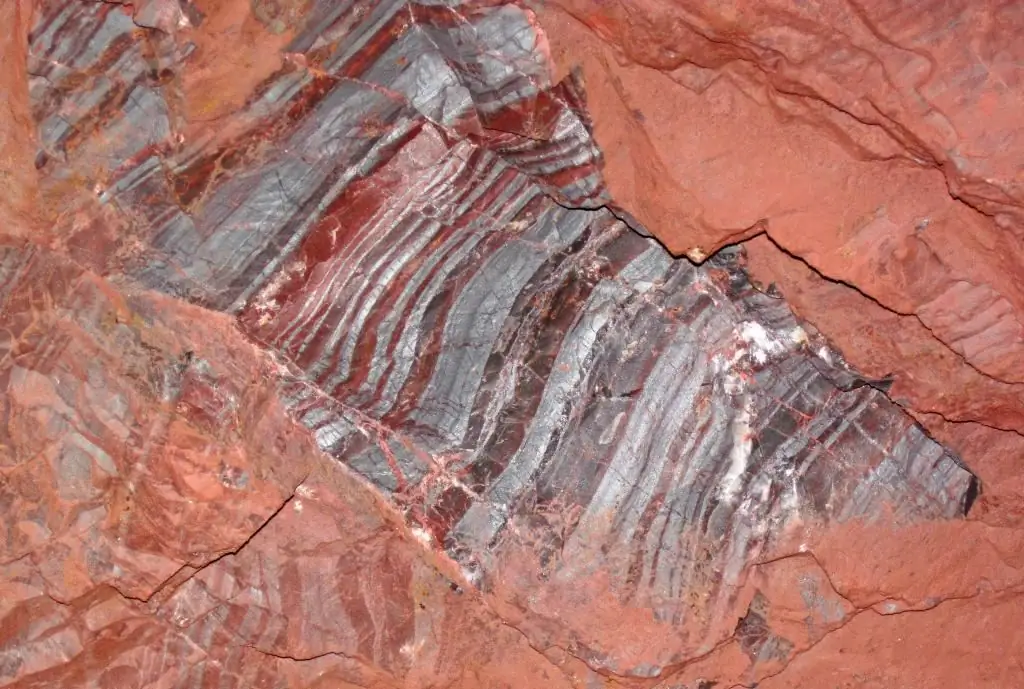- Author Henry Conors [email protected].
- Public 2024-02-12 02:55.
- Last modified 2025-01-23 09:07.
The Earth's crust is made up of many rocks and minerals. Some of them were formed relatively recently, others - several billion years ago. In this article, we will introduce you to one of the oldest rocks on our planet - ferruginous quartzites. What do they look like and what properties do they have? And how are they used by humans? Read all about it below.
General information about the breed
Ferrous quartzite (other common names are jaspilite, itabirite, taconite) is a metamorphic rock of chemogenic-sedimentary origin with a characteristic thin-layered structure. This is the most common "participant" in nature of ferruginous-siliceous formations.
Ferrous quartzites include the following minerals:
- quartz;
- magnetite;
- martite;
- hematite;
- biotite;
- chlorite;
- pyroxene;
- amphibole and others.
The presence of other minerals in the rock can be determined by the composition of the primary sediment, as well as the depth of the processesmetamorphization.
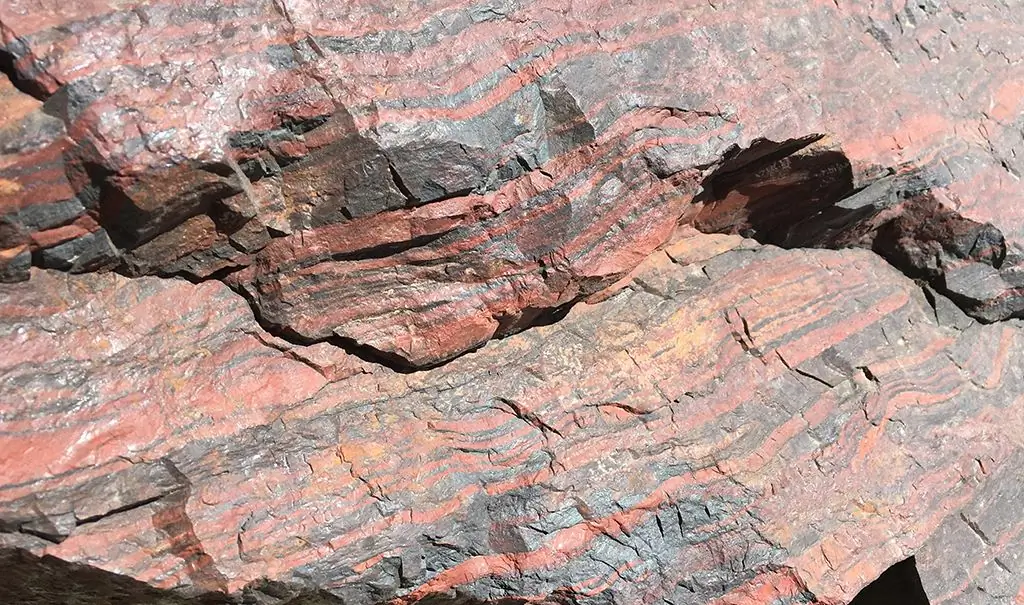
Deposits of ferruginous quartzites are usually confined to shields and platforms of the Precambrian period. The process of formation of this rock took place approximately 2.5-3 billion years ago. For comparison: the age of our planet is estimated by scientists at 4.5 billion years.
Basic rock properties
Ferrous quartzites are distinguished by the following set of physical and mechanical characteristics:
- Hardness - 7 on the Mohs scale.
- Rock color - reddish-brown, dark; sometimes gray or red-grey.
- Density of ferruginous quartzites - 3240-4290 kg/m3.
- Compressive strength - from 180 to 370-400 MPa (depending on the content of silicates in the rock).
- Refractoriness - up to +1770 ̊С.
- The structure of the rock is fine-grained or crystalline-grained.
- The texture of the rock is layered, thinly banded.
Ironiferous quartzites: origin and distribution of the rock
Jespilites can occur in layers of various thicknesses in the strata of ancient rocks of metamorphic origin. Often they are combined with micas, amphibolites, shales or gneisses. As a rule, ferruginous quartzites are the product of metamorphization of volcanic-sedimentary rocks significantly enriched in iron oxides. The latter are usually carried out as a result of active volcanic eruptions occurring under water.
The richest deposits of ferruginous quartzites are concentrated on the Kola Peninsula, in Krivoy Rog (Ukraine), in the Far East, in the northKazakhstan, in the Upper Lake region (USA), as well as within the Kursk magnetic anomaly. The following states own the largest reserves of this mineral resource:
- Russia;
- Ukraine;
- USA;
- Australia;
- India;
- Kazakhstan;
- South Africa;
- Liberia;
- Guinea;
- China.
Varieties of ferruginous quartzites
Jaspilites are distinguished in petrology:
- Wide bands (over 10 millimeters).
- Medium striped (3-10 millimeters).
- Thinly striped (up to 3 millimeters).
Genetic types of iron quartzites:
- Magnetite.
- Hematite.
- Martite.
- Hydrohematite.
- Magnetite-ankerite.
- Magnetite-hematite with interlayers of jasper (actually jaspilites).
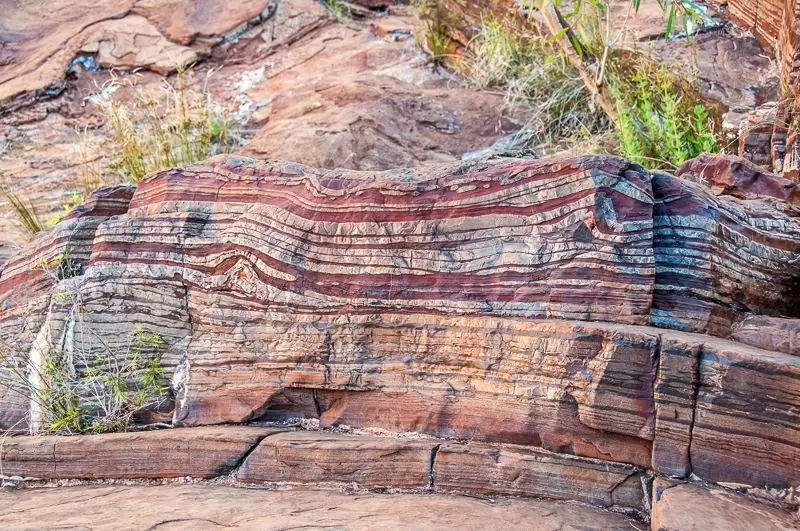
The chemical composition of a particular sample is determined by the content of silicate and ore minerals, as well as the degree of rock crystallization. However, a characteristic feature of all ferruginous quartzites is the fact that the substances SiO2, FeO and Fe2O3in total make up to 90% of the total mass of the rock. The remaining components are present in small proportions (no more than 1-2%).
It is worth noting that the oldest ferruginous quartzites on Earth were found on the island of Greenland, in the Isua region. Their age is estimated by geologists at 3,760 million years.
Use of stone
Ferrous quartzites widelyare used in ferrous metallurgy as a raw material for the production of metal, cast iron and some other products. In addition, souvenirs and inexpensive jewelry are made from processed and polished jaspilites, which have unusual patterns.
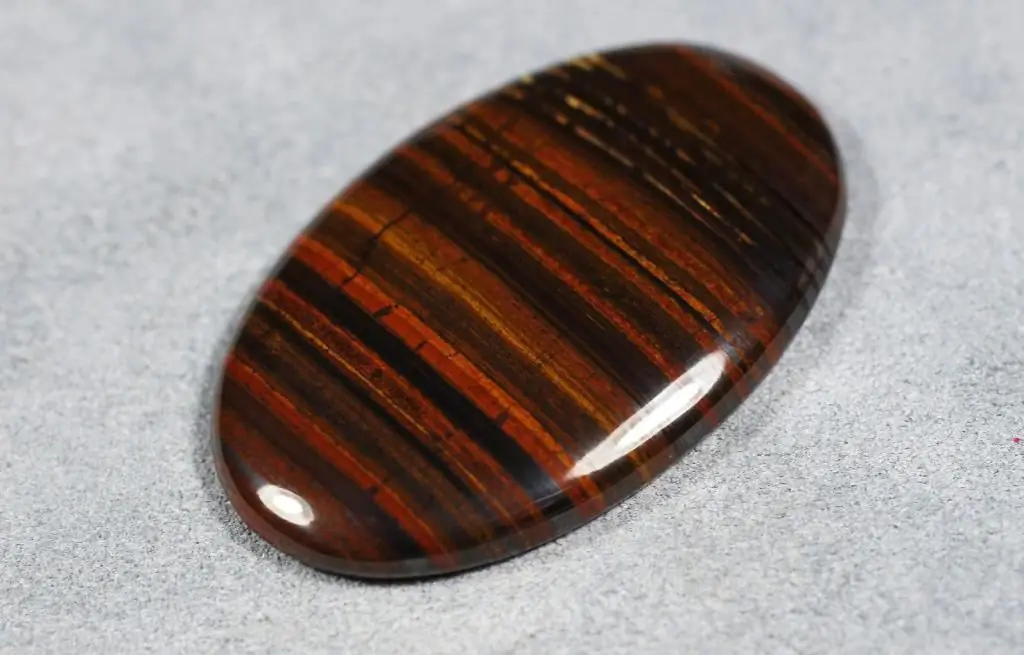
Lithotherapists attribute to jaspilites a unique ability to purify the blood, improve its circulation and relieve women of acute menstrual pain. In esotericism, it is commonly believed that this stone has a powerful energy force. Jaspilite talismans play the role of a kind of shield for a person, protecting its owner from dark personalities and evil intentions.
Enrichment of quartzite in industry
A layer of ferruginous quartzites with a ferrum content of over 30% is called iron ore. However, such ore requires enrichment. This is a complex of technical measures, the ultimate goal of which is to increase the percentage of iron in the rock to the maximum values. How are these processes carried out?
At the very beginning of the technical cycle, iron ore extracted from a mine or a quarry is sent to a crushing plant. There, large blocks of rock go through several stages of crushing, resulting in a fine quartzite powder.
The next stage is the separation of pure iron particles from grains of the so-called waste rock. To do this, quartzite grits are poured together with a stream of water into a magnetic separator. Iron particles are attracted by magnets, and quartzite mineral fragments are sieved. The output is a concentrate, which is then sinteredinto pellets and sent to a steel plant for subsequent steel smelting.
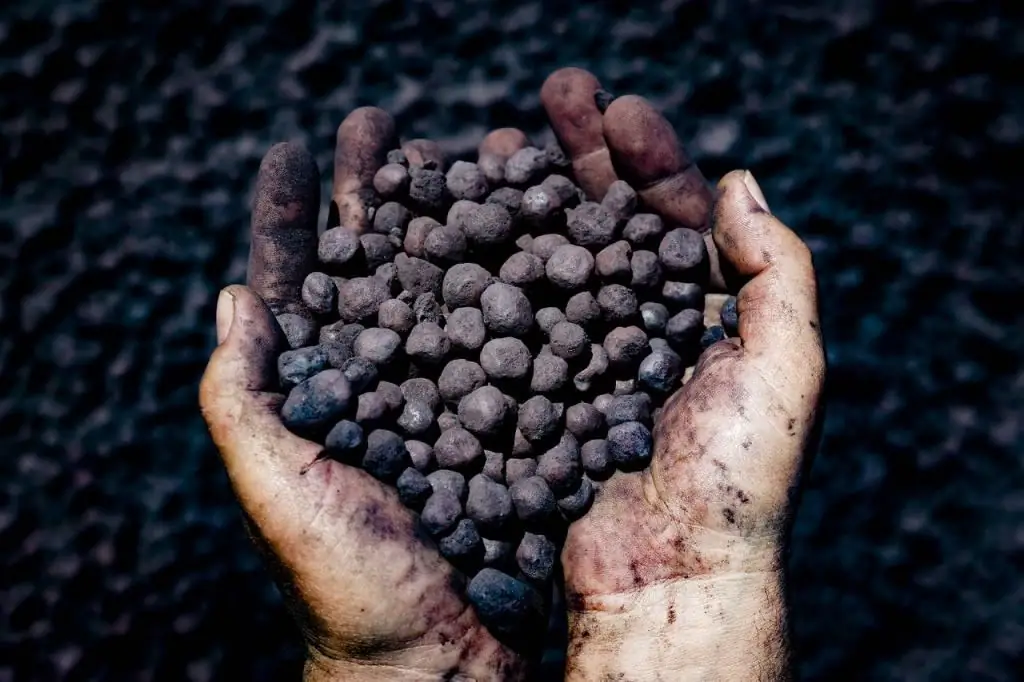
In closing
Ferrous quartzite is one of the most ancient rocks on Earth. Its deposits are confined to the foundations of the Precambrian and early Proterozoic platforms. In modern industry, this breed is used mainly in metallurgy, being the basic raw material for the production of iron and rolled steel.

